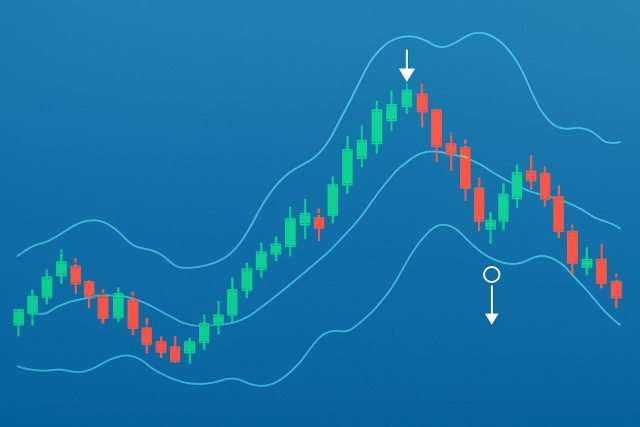
Options Trading For Dummies
Discover the essentials of options trading for dummies. This beginner-friendly guide explains key te...

Swing trading options around earnings season often serves up some pretty intriguing opportunities, thanks to the spike in volatility and those eye-catching price swings that tend to pop up when companies release their earnings. Jumping in without a solid game plan and the right dose of discipline can be a recipe for trouble.
Swing trading takes a medium-term view and aims to catch price moves that unfold over days or weeks—not just in a single session. This sets it apart from day trading, which focuses on quick moves within the same day, and long-term investing where you hold onto assets for the long haul. When it comes to options trading, you deal with contracts that grant you the right to buy calls or sell puts on an asset at a set price before a deadline.
Earnings season tends to stir up quite a bit of buzz and often triggers noticeable spikes in stock volatility as companies lay out their quarterly results. This period opens up interesting opportunities for swing traders who like to ride significant price moves and momentum. You’ll often see options premiums creep higher due to heightened uncertainty which can really pump up returns—but fair warning, it also turns up the risk dial a notch or two.
Keep an eye on upcoming earnings dates by checking financial calendars or using your brokerage tools. This is a smart way to stay a step ahead of events that can shake up the market.
Take a good look at how stock prices have moved around past earnings releases. This is the best way to get a feel for the typical swings you might expect.
Dive into implied volatility and option pricing trends to figure out whether premiums usually creep up or take a dip before earnings. These clues can be telling.
Set crystal-clear risk management rules that include how big your positions should be, where to place stop losses and the maximum loss you’re willing to handle without losing sleep.
Put together a watchlist of stocks that seem like the right fit for swing trades. Factor in sector trends and how much they tend to bounce around. It’s about finding those nice little trading sweet spots.
Careful preparation is like putting on your game face—it helps traders waltz into earnings season feeling confident and well-informed, rather than caught off guard. Knowing the exact earnings dates is key to dodging unwanted surprises, and taking a stroll down memory lane by reviewing past patterns can sometimes give you a sneak peek at how a stock might behave. Keeping an eye on implied volatility offers a more grounded sense of what option premiums and pricing might realistically look like. Setting clear risk controls is the safety net that helps traders cut losses when the market decides to dance to its own tune.

A swing trader reviewing earnings dates and stock charts to prepare for option trades.
Getting started with these strategies means picking the right setup—think of it like choosing the right tool for the job. Straddles and strangles let traders cash in on big price swings no matter which way the market decides to dance. These tend to be a solid bet when volatility is running high but the direction is anyone's guess. Vertical spreads are like your safety net, helping to cap maximum losses while still leaving room to pocket gains from favorable moves. They usually shine when you’ve got a directional hunch and want risk to be well defined. Selling premium after earnings really calls for a good dose of patience and a solid understanding of volatility crush—the moment implied volatility takes a nosedive and option prices drop right after earnings announcements. Timing is everything here—jumping in too early can eat into your gains thanks to premium decay.
| Strategy | Risk Profile | Ideal Market Conditions | Potential Profit Scenarios | Example Use Cases During Earnings Season |
|---|---|---|---|---|
| Straddle | High risk/reward | When volatility is running hot and the market’s direction is anyone’s guess | Profits from big price swings either way, up or down | Buying calls and puts at the same strike just before earnings, hoping for fireworks |
| Strangle | Moderate risk | Elevated volatility with a bit of uncertainty lingering around | Like a straddle but usually easier on the pocket with strikes spaced further out | Snapping up out-of-the-money calls and puts around earnings, expecting a shake-up |
| Vertical Spreads | Limited risk | Markets moving steadily in one direction, showing a clear bias | Makes money on modest moves one way while keeping risk in check | Using bull call spreads when you’re betting on a gentle rise before earnings |
| Selling Premium | Moderate to high risk | When implied volatility hits its peak, often right after earnings | Collects premium while hoping volatility takes a dip | Selling credit spreads or iron condors just after earnings, playing the calm after the storm |
| Timing Entry Around Earnings | Varies | Depends on your game plan and timing preferences | Can help cut down risk by picking the right moment to jump in before or after earnings | Taking option positions just before those all-important earnings announcements |
Managing risk during earnings season is absolutely vital, especially since unexpected earnings surprises can spark sudden price swings or cause those jaw-dropping gaps that shake up the market. Traders really need to size their positions with care and lean on stop losses to shield themselves from nasty, heavy losses. Getting a solid grasp on how implied volatility tends to take a nosedive right after earnings can be a real lifesaver when it comes to steering clear of holding options through those risky stretches.
Picture a trader gearing up for a tech company’s upcoming earnings, bracing for the stock to make a sharp move but having no clue which way it’ll swing. The trader dives into past earnings moves and implied volatility and spots that the stock tends to flap around wildly when option premiums run high. So they decide to buy a straddle—grabbing at-the-money calls and puts that expire just after the earnings drop. This swing trading options strategy lets them jump in two days before earnings, trying to balance the premium price tag and the ticking clock of time decay. After earnings hit, the stock pops 8%. The trader sells the call for a nice profit while deciding whether to hold onto or close out the put to keep losses in check. They close out the position within a few days, locking in gains and steering clear of the usual post-earnings volatility nosedive.
23 articles published
Transforming the field of commodities trading through sustainable investing principles, she bridges traditional finance with ESG considerations.
Read Posts
Discover the essentials of options trading for dummies. This beginner-friendly guide explains key te...

Learn how the True Range indicator captures market volatility and price swings, empowering traders t...

Master trading with Bollinger Bands by understanding volatility, setup patterns, and risk management...

Master TrendSpider strategies for all market types with this in-depth guide. Learn how to harness au...
27 articles published
23 articles published
20 articles published
